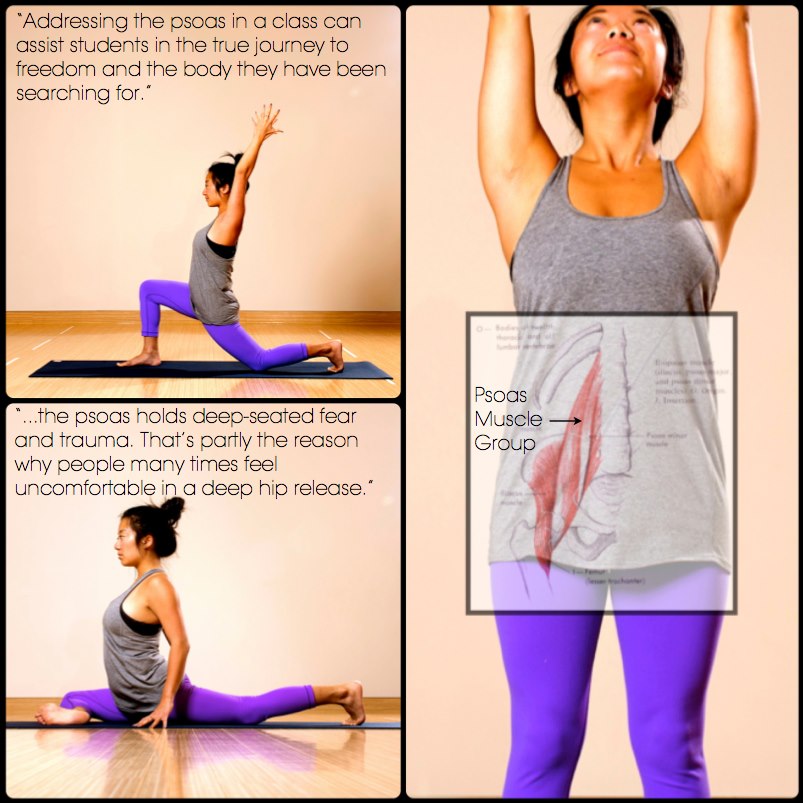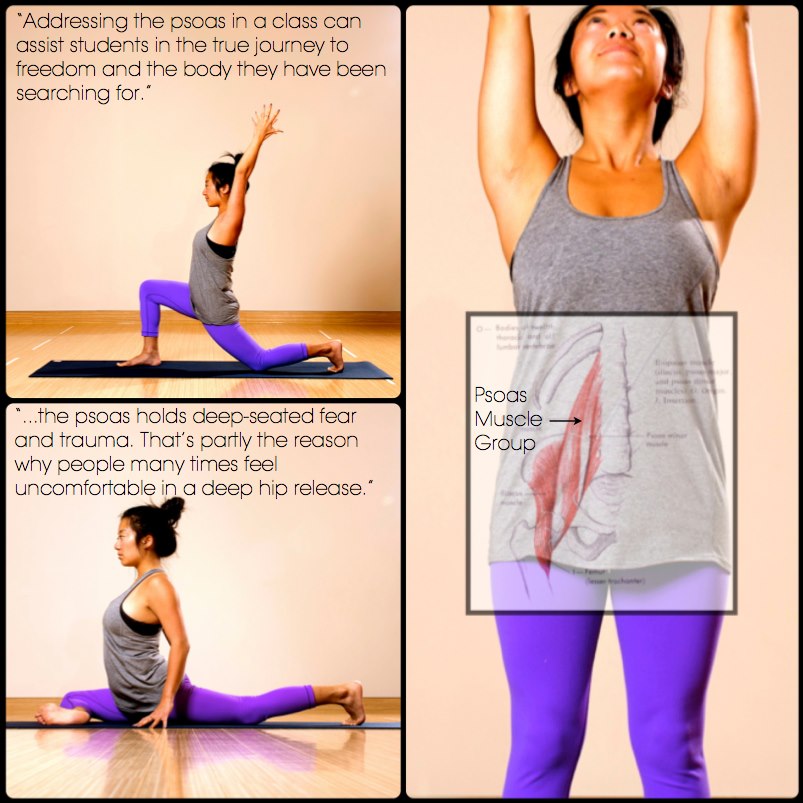Your PSOAS - What it is and Why You Should Care!
The psoas (SO-az) is a muscle running through the pelvis to the upper part of the femur.
This long, thick, fibrous muscle helps with walking, and is one of the largest muscles in the body.
In yoga the psoas is often overused, usually in place of the core in poses such as Boat (navasana), standing leg extension, and even tree, which can cause a barrel of problems.
And that's just the beginning!
The psoas is also a huge storage depot for fear, trauma, and childhood concerns.
Take, for example, the dreaded potty training stage. Emotional trauma from this stage can get buried in this early childhood developmental muscle, and decades later can become a cause for concern.
That's because the psoas is like a storage depot that never gets emptied: Everything just keeps getting dumped into the psoas.
Pain related to the psoas can easily cause a slew of symptoms such as:
- Back pain
- Hip socket tension
- Leg length discrepancies
- Knee and ankle problems
- Groin pain
- Sleep issues
- Jaw pain
- Shoulder pain
- Difficulty walking or standing
- Excessive muscle tension
- Referred back and sciatic pain
One way the body tries to bring balance and release without us realizing it is by teeth grinding. By grinding our teeth, we allow synovial fluid to keep running through the CNS (central nervous system), helping the body find balance.
Not understanding what the body is trying to do, we try to treat the grinding instead of the real issue: the psoas. That's why treatments such as crainosacral therapy work, because in this type of practice, one works to release the pelvis and other connected areas.
The psoas has many other cries for help, too, including menstrual cramps. When the psoas is tight, it pins the uterus down, giving a woman sometimes very painful cramping. Other signs that the psoas needs rehab include insomnia, foot and leg dysfunction, and water retention.
And as I stated before, the psoas holds deep-seated fear and trauma. That's partly the reason why people many times feel uncomfortable in a deep hip release (PIGEON!), getting anxious, angry or sometimes even brought to tears.
Our psoas can additionally cause concerns:
- Prolonged sitting can easily deplete over vital energy as well as tighten up this pesky muscle.
- Cause compression on the intervertebral disc and facet joints leading us to thinner, degenerating disc. (While degeneration is a natural process, we can lessen the effects.)
- Dragging the rib cage forward creating short breathing patterns and limited thoracic breathing.
- Digestive concerns in which the upper portion of the psoas is tight and restrictive.
- Breathing problems, as pressure is put on the diaphragm.
Addressing the psoas in a class can assist students in the true journey to freedom and the body they have been searching for. It's by no means easy, and often uncomfortable and frustrating, but the reward is a more balance body, mind, and spirit.
Rehab your psoas with releasing and toning exercises:
Supine Single Leg Pull
Many focus too much on pulling the leg into the chest and hugging with all their might, but here I want to encourage you to focus on only taking the knee into the chest to the point you feel sensation all the while keeping the pelvis stable (and in neutral) rather than allowing the pelvis to curl along with the leg being hugged.
Focus on extending the lower leg away from the body, feeling a release in the psoas (groin area or lower back) Move slowly and do not force the release.
Do not keep extending the leg or hugging the upper leg if your pelvis is moving with. Work here for one to three minutes or more, moving slowly and mindfully.
Many of our instructors at Yogalife will begin or end with Pavanmuktasana (Wind Relieving Pose) for these reasons.
Supine Single Leg Lift
Lying on you back comfortably bend one knee and place the foot to the floor.
Find neutral pelvis and find comfort lying on the floor.
Extend the opposite leg and actively reach the heel away from the body without arching the back or pelvis.
Inhale and exhale activate the pelvic floor and press through the opposite foot to lift the heel off the floor a few inches.
Mindfully move the leg up and down a few times (a few inches) and then side to side a few inches.
This is an area many teachers are trying to have you move through, when we encourage you to hug your legs into the midline when doing yogi bicycle, boat pose, etc!
Constructive Rest Pose
Lying on your back flat on the floor, widen your feet to the width of the mat and let your knees fall together (if this is difficult place a block or rolled towel between the knees). Rest here for up to five minutes really focusing on softening the inner hips and relaxing your breathing down to the area of focus.
It's no wonder to me that in our fast-paced, all-or-nothing world that we're all in need of a little hip release, a little fear-unlocking, a little psoas rehab.
*** In many, if not all yoga classes at Yogalife, you will engage in some sort of a lunge series. Low lunge or high lunge (anjaneyasana). In this pose (and many others), you may hear an instructor cue you to "tuck your tailbone in" or "draw your pubic bone up towards your sternum). Here, we are tying to help you OPEN up your psoas, so you can work deeper into the pose, and yourself. This mindful alignment will help you to progress through your practice, and though whatever you may be storing in your psoas (and hips) ***If you have any further questions or concerns, do not hesitate to ask any of our qualified teachers!



